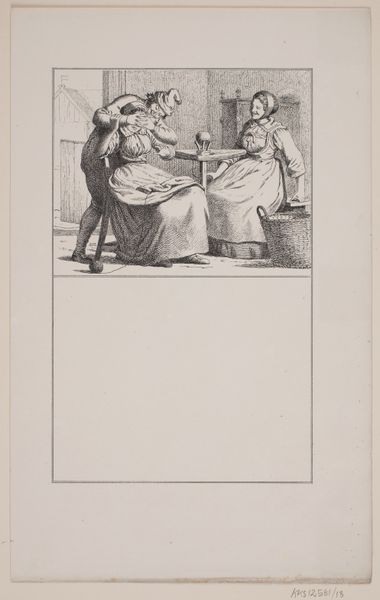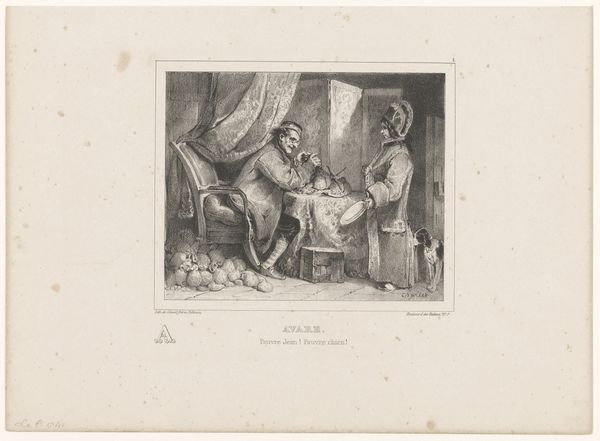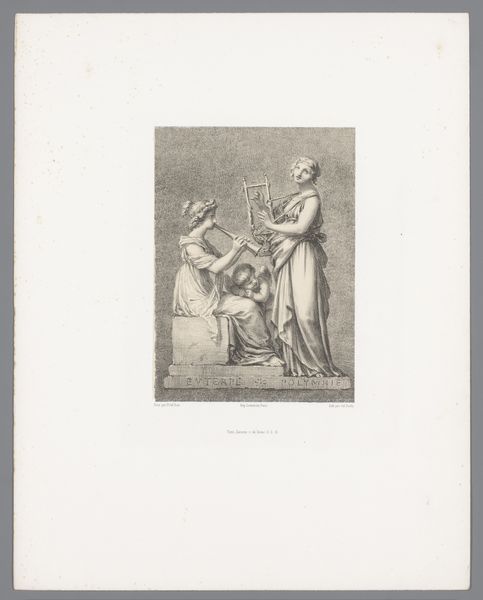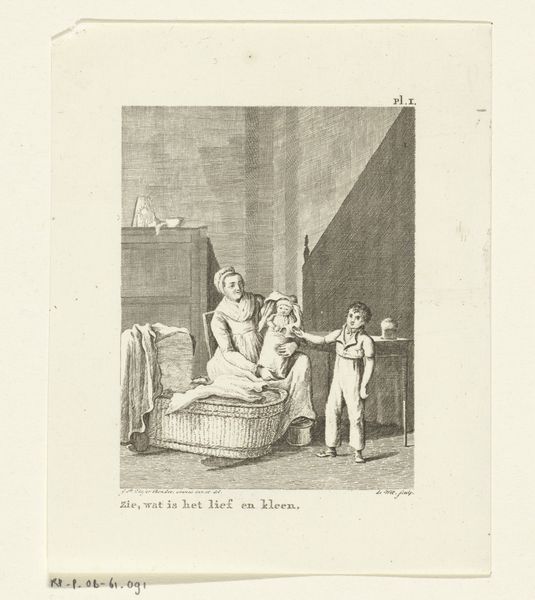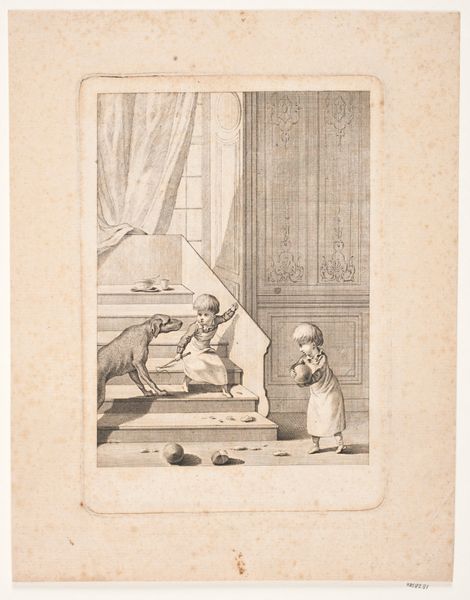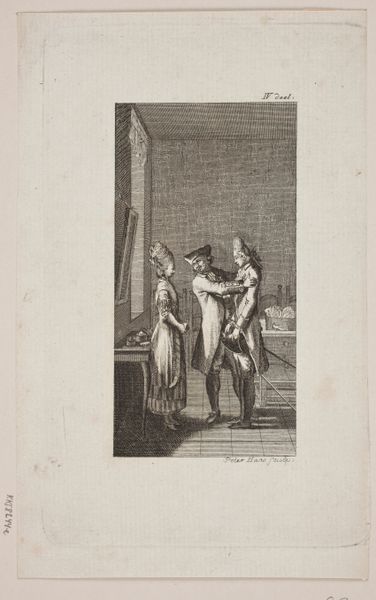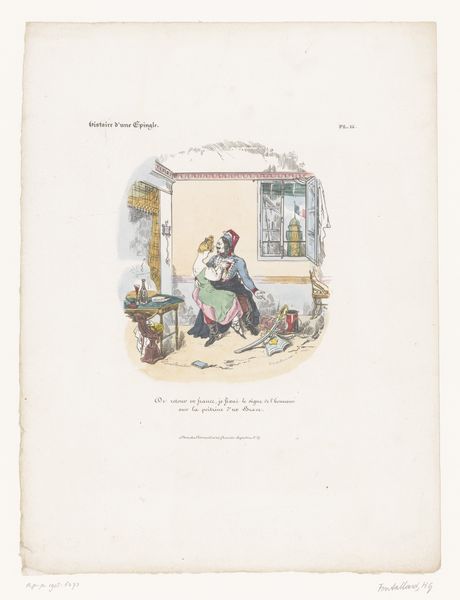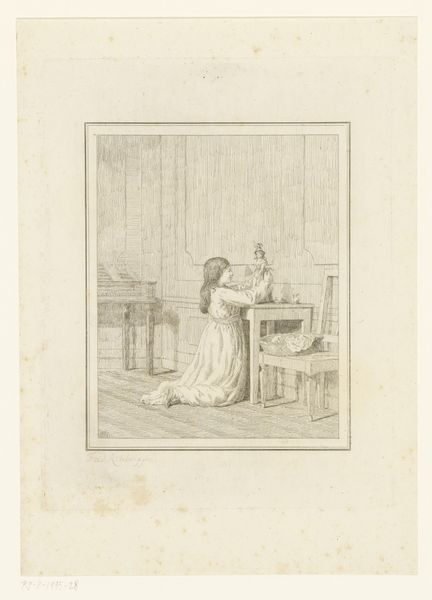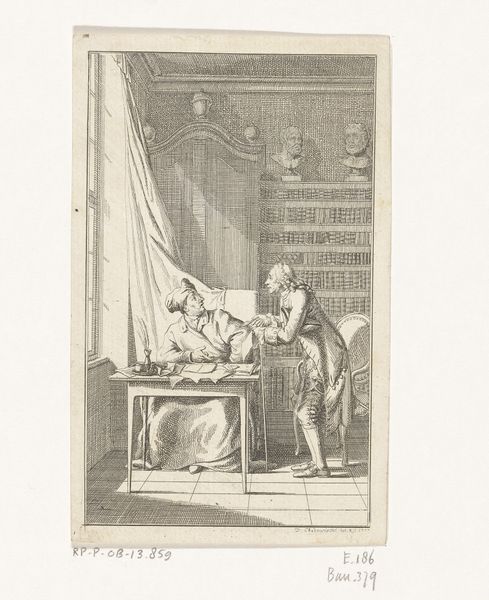
#
neoclacissism
#
allegory
# print
#
caricature
#
pencil sketch
#
figuration
#
history-painting
Dimensions: 11 x 7 3/4 in. (27.94 x 19.69 cm) (image)
Copyright: Public Domain
Curator: Here we have "Les arts et la décence," or "The Arts and Decency," a print dating to around 1820, currently residing here at the Minneapolis Institute of Art. Editor: My initial reaction is… satire. The contrast between the classical figure and the… odd accessories immediately grabs attention. Curator: Exactly. This print embodies the Neoclassical movement, which was very popular at this time, in its classical form of an ideal, athletic male figure. Editor: But then that strategically placed, overly decorative covering. Is that supposed to be censoring the male nude or is it an accentuation of the figure through humor? This resonates so strongly with current debates around censorship and representation. What's being protected here, and from whom? Curator: The caricature aims to expose a perceived hypocrisy within society. You'll notice, for example, that he seems to be a sculpture—still. The female figure seated at an easel appears to represent one of the fine arts; her classical garments mark her as more genteel than the old woman standing behind. Editor: So, this composition acts as social commentary. What statements can we make regarding the politics and reception of art and who has access? It questions those boundaries in a manner that reflects struggles for equity and artistic freedom even today. Curator: Indeed. The layering of these figures hints at the differing classes or roles in viewing art, but the exact meaning is difficult to decipher. The “decency” aspect creates tension between public perception, classical artistic portrayal, and socioeconomic implications. Editor: Right, and who gets to decide what is "decent"? "The Arts and Decency," with its strange pairing of elements, compels me to think of art's disruptive power, how it can both uphold and subvert norms depending on who’s looking and why. Thanks to these odd historical juxtapositions and this piece we can hold these crucial conversations about control and context even now. Curator: I concur. By examining pieces like this, we're really scrutinizing how societies historically negotiate values and ideals via symbolic presentation in the arts. Thank you for shedding light on that angle, as well.
Comments
No comments
Be the first to comment and join the conversation on the ultimate creative platform.
